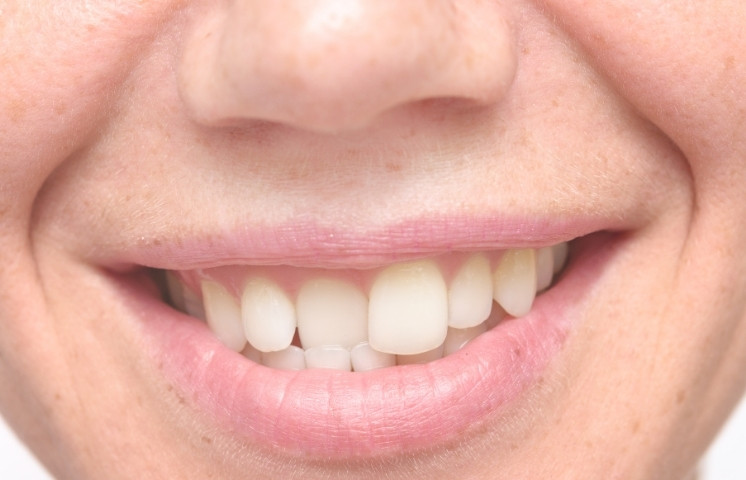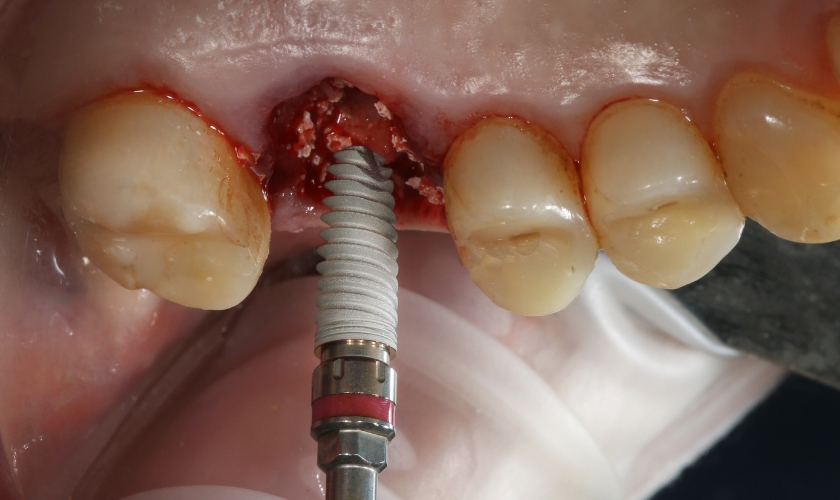We are not a registered Medicare/Medicaid Provider

Gaps between teeth, also known as diastemas, can impact your smile and confidence. While braces are a traditional solution, they aren’t always necessary. Fortunately, there are various methods to close these gaps without the need for braces. Let’s explore the causes of gapped teeth, why fixing them matters, and alternative treatments that can effectively address the issue.
What Causes Gapped Teeth?
Genetics and Natural Growth
Gapped teeth often result from genetic factors or natural growth patterns. If your parents had gaps in their teeth, you might be predisposed to the same condition. Additionally, natural growth can create spaces between teeth, particularly during childhood when adult teeth emerge.
Misalignment of Teeth and Jaws
Teeth gaps can also stem from misalignment of the teeth or jaws. When the teeth do not align correctly, they may drift apart, leaving unsightly spaces. This misalignment can be due to various factors, including developmental issues or dental trauma.
Missing Teeth
When a tooth is lost and not replaced, the surrounding teeth can shift into the empty space, leading to gaps. This shifting can cause further misalignment and the creation of additional gaps in the teeth.
Why Fix Your Gap Teeth?
Improved Aesthetic Appeal
One of the primary reasons to address gaps in teeth is to enhance your smile’s appearance. Gaps can make your smile look uneven or incomplete, which can affect your confidence and self-esteem.
Enhanced Oral Health
Gaps in teeth can also lead to oral health issues. Food particles and plaque can accumulate in the spaces, increasing the risk of cavities and gum disease. Closing these gaps helps to reduce these risks and maintain better oral hygiene.
Functional Benefits
Gapped teeth can sometimes affect your bite and speech. Fixing the gaps can improve chewing efficiency and correct speech issues caused by the gaps.
Braces Aren’t Always Necessary
Traditional Braces vs. Alternatives
Braces are a common method for closing gaps, but they aren’t always the best or only option. Braces can be time-consuming and require a commitment to oral hygiene and regular visits to the orthodontist. Fortunately, other effective treatments can address gaps without the need for traditional braces.
Customized Treatment Plans
An orthodontist in Haymarket can create customized treatment plans based on your specific needs. These alternatives can be less invasive and more convenient compared to traditional braces, offering a more personalized approach to closing gaps.
When Do Braces Make Sense?
Complex Cases
Braces are still the best option for more complex cases of misalignment and gaps. If the gaps are part of a broader alignment issue or if there are additional orthodontic concerns, braces may be necessary to achieve the desired results.
Long-Term Solutions
For some individuals, braces offer a long-term solution that can prevent the recurrence of gaps and other alignment issues. If you have multiple dental problems that need addressing, braces might be the most comprehensive approach.
5 Common Ways Experts Treat Gaps in Teeth Without Braces
1. Dental Bonding
Dental bonding is a popular method for closing gaps in teeth. A tooth-colored resin is applied to the affected teeth and then sculpted to fill the gaps. This method is quick, effective, and minimally invasive.
2. Veneers
Dental veneers are thin shells of porcelain or composite resin that are bonded to the front of the teeth. They can be used to cover gaps and improve the overall appearance of your smile. Veneers offer a durable and aesthetically pleasing solution.
3. Dental Implants
For gaps caused by missing teeth, dental implants are a viable option. Implants involve placing a titanium post into the jawbone, which acts as a replacement root for a prosthetic tooth. This method not only fills the gap but also prevents further shifting of surrounding teeth.
4. Invisalign
Invisalign is an advanced orthodontic treatment that uses a series of clear, removable aligners to gradually move teeth into the desired position. It’s a discreet and effective way to close gaps without the use of traditional braces.
5. Retainers
In some cases, a retainer can be used to close minor gaps. Retainers are custom-made devices that hold teeth in place after orthodontic treatment. They can be adjusted to help close small gaps over time.
Can Teeth Gaps Close Naturally?
In some instances, teeth gaps may close naturally, especially in children and teenagers as their teeth continue to grow and shift. However, this is not always guaranteed, and the process can be unpredictable.
Several factors can influence whether gaps close naturally, including the size of the gap, the alignment of the teeth, overall oral health, and even the ability to fill the gap between teeth and gums naturally. If gaps do not close naturally, seeking professional treatment from an orthodontist in Haymarket is recommended.
If you have concerns about gaps in your teeth, consulting with a dental professional is essential. They can assess your specific situation and recommend the most effective treatment options to address your gaps and improve your smile.
Embrace a Fuller Smile Without Braces
Addressing gaps in your teeth doesn’t always require traditional braces. With advancements in dental treatments and personalized solutions from an orthodontist in Haymarket, you can close gaps effectively and achieve a beautiful smile. Whether through dental bonding, veneers, or other innovative methods, there are various options to suit your needs and preferences. Don’t let gaps hold you back—explore the available treatments and take the first step towards a more confident, radiant smile!



